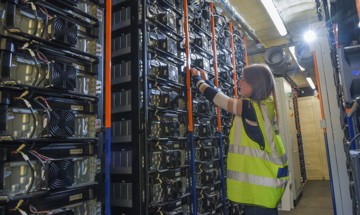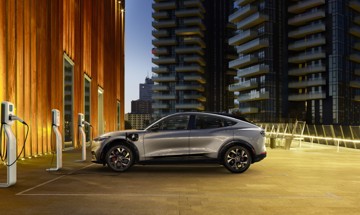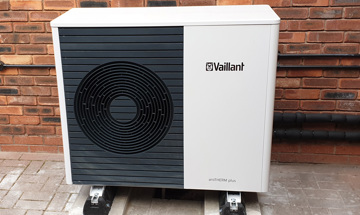Centrica’s newly launched People and Planet plan includes a commitment to electrify its commercial fleet, the third largest in the country, by 2025. The company is rolling out 3,000 Vauxhall Vivaro-e vans, the largest electric vehicle order for a commercial fleet in the UK. We asked one of our engineers to let us know how it’s going so far.
Like 70 per cent of my fellow engineers I don’t have a driveway, so making the switch to electric was unlikely to be straight forward. Add to that the fact I live in Ross-on-Wye, a town with just four public charging points, and that I service a patch that includes South Wales, Worcester and Gloucestershire, I’m actually one of the last people who should have made the transition.
That’s why it took a lot of badgering of the fleet team to allow me to be among the first to drive the new Vauxhall Vivaro-e vans. So, after 10 weeks, 2,600 miles and 300+ jobs what’s my experience been like of living and working with a fully electric van? Is it possible to make the switch without the safety net of a home charger?
I regularly work out-of-hours covering emergencies. When I am, it’s important that the van is charged and ready to cover various routes across the patch. Swansea is about 85 miles away, so I use a 100 mile range as the benchmark for the minimum charge required.
Because I don’t have a driveway, the van is charged at a local car park most of the time, which is a three minute walk from home and has both a 50 kW and 7 kW charger. If I’m on out-of-hours, I’ll use the rapid charger to top up so that I can be sure that the miles are ‘in the tank’. A 45 minute rapid charge is usually enough time to provide the required range either for that shift or even the next couple of days.
Otherwise I use the slower charger while parked overnight, this happens two or three times a week.
The training Centrica provided was extremely helpful. Moving from a manual diesel to an automatic fully electric van requires an adjustment to your driving style to get the best out of it. We have an internal chat dedicated to the drivers of the electric vans and we share ideas and tips on getting the best out of them. Of course, there’s also a competition to see who has the highest efficiency.
I have become an expert grazer, regularly topping up where charging is available. Working on new build properties quite regularly I’ll ask permission to top up on the construction site, using the domestic wallboxes, but even when grabbing lunch I’ll top up at the supermarket car park. I’ve also learned where the local rapid charters are and I’m always the first to know when new ones come into service.
Centrica has paid for an annual parking permit at the car park and the local council has been very supportive of me using the chargers. The van’s also become a talking point and members of the public are very interested to know what’s it like to drive an electric vehicle and how many miles I get out of it.
It’s like the van is a minor celebrity, people have let me go first in a queue for a charger, and one guy even offered to pay for a charge for me. I must be persuasive as one person in Ross-on-Wye has convinced his boss to order electric vans after talking to me about my experience.
There have been times where the charge has gone very low, usually related to multiple chargers have being out of order simultaneously or where the app or payment card isn’t accepted. The closed membership only chargers are one of my biggest bugbears, but I’ve not run out of charge entirely.
The Vauxhall app is great, it allows me to defrost the van in the morning and it means I can remotely monitor and take the van off charge when I have sufficient range. Otherwise I drive it in normal mode, I don’t suffer for the sake of efficiency, so the heating or air conditioning is on or the windows are down and this gives me an average of 2 miles per kWh – which equates to a range between 150 and 190 miles.
The training Centrica provided was extremely helpful. Moving from a manual diesel to an automatic fully electric van requires an adjustment to your driving style to get the best out of it. We have an internal chat dedicated to the drivers of the electric vans and we share ideas and tips on getting the best out of them. Of course, there’s also a competition to see who has the highest efficiency.
I genuinely thought it would be harder to make the transition than it has been. I think that as long as you adopt the mindset that things can and do go wrong and be prepared to work around them then you can’t go too far wrong.
And remember your ABCs – Always Be Charging.

Blog
Battery storage – the ying to renewables' yang
Tech & Innovation

Case Study
Electric vehicles are helping to drive a revolution in energy use
Tech & Innovation

Blog
The drive for Diversity in the UK Tech sector
Tech & Innovation

Blog
Hydrogen boilers will help us to reach net zero together
Tech & Innovation

Blog
Adapting to a Flexible First approach and the tech that will help us
Tech & Innovation

Case Study
Will the hybrid heat pump help pave the way for a future of no gas?
Tech & Innovation
